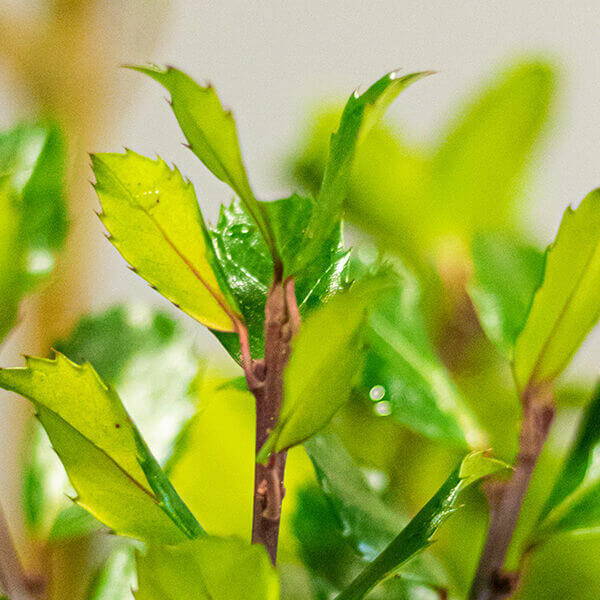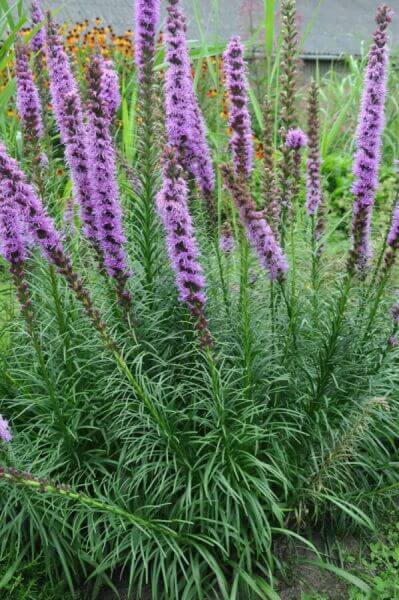Tall Hedging Plants For Maximum Privacy
Enhance your garden's appeal with rich hedge ranges such as Yew (Taxus), Thuja, Laurel, Photinia, and Bamboo, celebrated for their structural integrity and environmental benefits.
Yew and Thuja supply evergreen protection and winter season durability, while Laurel offers quick development and broad, fragrant leaves.
Photinia includes seasonal beauty with its dynamic red foliage, and Bamboo provides a low-maintenance, peaceful ambiance.
These hedges improve air quality, lower noise, and develop tranquil, personal spaces.
Correct planting, spacing, and maintenance make sure vigorous development and environmental harmony.
Check out how these lavish varieties can raise your garden's charm and well-being.
Secret Takeaways
Change Your Garden With Lush Hedge Varieties
- Select Yew for its thick, evergreen growth and unparalleled durability.
- Choose Laurel for its quick growth and broad leaves, guaranteeing fast personal privacy.
- Select Photinia for its vibrant seasonal foliage, which turns a striking dark red.
- Use Bamboo for a low-maintenance, winter-hardy hedge with aesthetic appeal.
- Area plants 2-3 per meter and prune regularly for optimum growth and health.
Popular Hedge Plants
When transforming a garden with lavish hedge varieties, it's important to consider popular hedge plants such as Yew, Thuja, Laurel, and Photinia due to their special qualities and advantages.
Yew (Taxus) is highly respected for its durability and dense, green development, making it a prime option for enduring landscapes.
Thuja is noted for its evergreen foliage and robust winter season strength.
Photinia adds seasonal vibrancy with red leaves that darken gradually, creating dynamic visual appeal.
Laurel uses quick growth and fragrant, broad leaves, suitable for fast personal privacy.
Additionally, Bamboo is an exceptional choice for ambiance, providing a low-maintenance, winter-hardy alternative that boosts the garden's aesthetic with its stylish, swaying walking sticks.
These choices deal with a range of horticultural requirements and choices.
Advantages of Garden Hedges
Garden hedges offer a wide variety of advantages, making them an important addition to any landscape. These natural barriers are economical to carry out and supply considerable wind defense, boosting air flow and contributing to sound decrease. The dense foliage of hedges like Thuja and Beech makes sure personal privacy by obstructing presence, producing a peaceful and secluded environment.
Hedges likewise play a vital function in microclimate regulation, supplying a stable environment that fosters plant development and reduces temperature level changes. Their intricate leaf structures filter toxins, improving air quality and contributing to a much healthier garden ecosystem.
Furthermore, hedges master sound reduction, soaking up and deflecting acoustic waves to lower ambient sound levels. This dual performance of providing both visual and acoustic personal privacy improves the overall harmony and aesthetic appeal of any garden.
Planting and Maintenance Tips
For an effective hedge, precise preparation of the planting area is essential. Make sure the soil has proper pH and drainage to support strong root advancement.
Area the plants appropriately for the selected types. Water the hedge frequently during its preliminary growth phase, adjusting as required with seasonal changes.
Implement a methodical bug control and disease prevention method, utilizing chemical or organic treatments when needed. Frequently check for aphids, mites, and fungal infections.
Apply mulch to retain moisture and suppress weeds. Seasonal pruning promotes thick development and air blood circulation, essential for plant health.
Following these guidelines will help you cultivate a dynamic, well-kept hedge that enhances the charm of your garden.
Spacing and Cutting Standards
Spacing and Cutting Standards
Correct spacing and cutting are vital for cultivating healthy, visually appealing hedges. Adequate spacing ensures each plant receives sufficient nutrients, light, and airflow.
Follow these standards for optimum hedge upkeep:
- Spacing: Position hedge plants 2-3 plants per meter to motivate robust development.
- Pruning Techniques: Routine pruning is necessary for keeping wanted hedge height and shape. Cut brand-new growth in summertime and cut back older wood during winter season.
- Seasonal Care: Change cutting techniques and schedules according to seasonal requirements to guarantee plant health.
- Hedge Height: Regularly monitor and trim to preserve the preferred hedge height and achieve uniform visual appeals.
Adhering to these steps will ensure your hedge grows, improving both the appeal and functionality of your garden.
Choosing the Right Hedge
Choosing the Right Hedge
Picking the proper hedge involves evaluating aspects such as fully grown height, foliage density, and environmental strength. Effective hedge plant selection needs understanding each types' development characteristics and site-specific flexibility.
For instance, Yew (Taxus) offers exceptional longevity and thick growth, while Thuja is notable for its winter season resilience. In addition, considering upkeep requirements is crucial; fast-growing types like Laurel or Privet demand routine trimming, whereas low-maintenance choices like Bamboo or Ivy might be more effective for those seeking very little upkeep.
Ecological factors such as soil type, light accessibility, and wetness conditions ought to likewise guide the choice procedure. This cautious technique ensures the selected hedges will grow, providing both functional and aesthetic advantages to the garden landscape.
Delivery and Planting Recommendations
To guarantee your hedge plants thrive, they must be provided by specialized couriers and planted immediately upon arrival.
Follow these necessary steps for successful planting:
- Soil Preparation: Enhance the soil with natural matter to improve drainage and nutrient content.
- Planting Depth: Produce a trench two times the width and equivalent to the depth of the root ball.
- Watering Techniques: Water thoroughly after planting, keeping the soil regularly wet however not filled.
- Mulching: Use a layer of mulch to keep moisture and reduce weeds.
Customer Support and Service
Provided the crucial role of timely help in horticultural pursuits, our customer support team is offered 6 days a week through telephone, e-mail, and social networks to use expert guidance and quickly attend to any issues. Their commitment to fast reaction times makes sure consumer fulfillment by solving questions connected to plant health, optimum planting approaches, and upkeep schedules.

Action Time
----------------------
Telephone
Within two days
This comprehensive support system, strengthened by an excellent 9.3/ 10 consumer rating, highlights our commitment to enhancing the gardening experience for each client.
Often Asked Concerns
The Length Of Time Does It Take for Hedge Plants to Establish?
Hedge plants typically need one to 3 years to end up being completely established, with the precise duration varying by species and growing conditions.
Efficient care during this crucial period is important for robust growth. Constant watering, alert weed control, and proper fertilizer application are essential in promoting strong root advancement.
For instance, fast-growing types like Laurel might establish hedging plants faster, while slower-growing varieties such as Yew may take longer. Thorough upkeep accelerates the establishment process, leading to thick and healthy hedges.
What Are the Best Hedge Plants for Privacy?
The concern of the very best hedge plants for privacy involves examining evergreen and deciduous alternatives.
Evergreen hedges like Thuja, Laurel, and Cypress offer year-round coverage, ensuring constant personal privacy.
In contrast, deciduous hedges such as Beech offer seasonal personal privacy, shedding leaves in chillier months.
Key upkeep pointers for privacy hedges include routine trimming, fertilizing in spring, and proper spacing-- usually 2 to 3 plants per meter.
In addition, constant watering and diligent weed elimination are essential for promoting healthy, dense development.
Can Hedge Plants Attract Wildlife to My Garden?
Yes, hedge plants can bring in wildlife to your garden by offering essential advantages like shelter, food, and nesting sites, therefore improving regional biodiversity. Yew, holly, and laurel are exceptional for drawing in birds, while ivy supports a range of bugs.
Nevertheless, it is very important to keep in mind that there are some drawbacks, such as increased upkeep to handle insects and routine upkeep. Carefully picking and maintaining hedge ranges can assist balance these advantages and downsides, eventually fostering a dynamic and sustainable ecosystem in your garden.
Exist Any Blooming Hedge Plants Available?
Yes, there are flowering hedge plants available that can improve the appeal of your garden.
For example, Elaeagnus, also called Olive Willow, produces aromatic white flowers in the fall, including a touch of elegance.
Photinia, another popular choice, showcases dynamic red leaves that grow into an abundant green, creating a dynamic visual impact throughout the seasons.
To make sure these plants thrive, it's important to practice appropriate pruning methods and seasonal upkeep, such as cutting brand-new growth in the summer and cutting back in the winter.
These steps will help preserve the health and visual appeal of your blooming hedges.
How Do I Avoid Bugs in My Hedge Plants?
To avoid bugs in hedge plants, use natural bug control approaches and keep correct hedge care. Present helpful pests like ladybugs, which prey on harmful pests, to develop a well balanced environment.
Frequently check your hedges for indications of invasion and without delay get rid of any afflicted parts to prevent the spread. Guarantee the health of your hedges by applying well balanced fertilizers and supplying appropriate water.
Use mulching to keep soil moisture and proper spacing to reduce plant tension and promote robust development. These practices jointly assist in decreasing bug problems and preserving a healthy hedge.
Conclusion
In essence, choosing the right hedge ranges such as Yew, Thuja, and Laurel can change any garden into a peaceful haven. These plants provide year-round plant, improve aesthetic appeal, and deal useful benefits like sound decrease and wind protection.
Correct planting strategies, accurate spacing, constant watering, and seasonal cutting are vital for optimum growth.
Dependable delivery services and professional customer assistance guarantee a seamless experience from purchase to planting, making it easier than ever to elevate your outside space.
Garden hedges use a wide variety of benefits, making them an important addition to any landscape. These natural barriers are affordable to carry out and offer substantial wind security, boosting air flow and contributing to sound reduction. The thick foliage of hedges like Thuja and Beech ensures personal privacy by blocking exposure, developing a secluded and peaceful environment.

Pruning Strategies: Routine pruning is important for maintaining wanted hedge height and shape. Trim new development in summertime and cut back older wood during winter season.